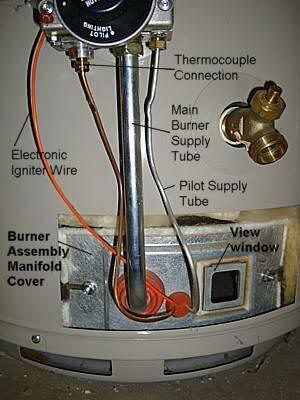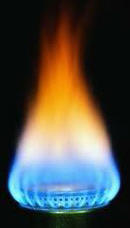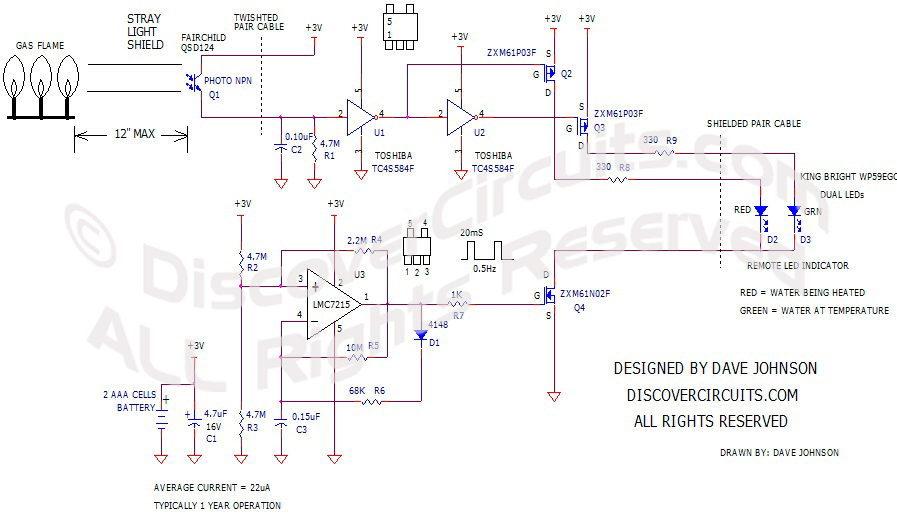|

|
|
|
|
|
|
What the World
Needs Now --
Water Heater Flame Detector, Aug 5, 2012
|
Previous Issues |
| A while back I got
an email from a Discover Circuits visitor. He had a house full of guests who all had to
share one bathroom shower. The small homeís water heater was not large, so it
frequently ran out of hot water. He wished there was a way he and his house guests
could know when it was safe to take shower. |
| One way to know
when there was enough hot water for a shower would be to monitor the gas flame of the
heater. If a device could somehow detect if the gas powered water heater was not
heating water, then he and his guests would know there would be enough hot water to take a
shower. But his water heater was in the basement. How could he detect when the
gas flame of the heater was off and convey that information to some other more convenient
location? |
 |
 |
 |
| Gas Flame
Viewing Port |
| |
 |
| Heater Gas
Flame |
|
| Gas water heater |
Gas water Heater with
access panel removed |
|
| I thought about
this for a while and decided a battery powered circuit would be best for his situation.
Like many homes, his water heater was located next to the furnace. The water heater
was gas powered. There was no electrical connection. On the other hand, his
furnaceís thermostat was powered by a 24vac transformer. The thermostat was
positioned on the main floor of his house in a good central location. |
| Based on the description of his
water heater, I thought an optical method should work. There is a flame
viewing port on the bottom of the heater, normally covered by an access panel.
A small hole could be drilled in the panel, in line with the viewing port.
A phototransistor could be mounted in the hole, aimed at the nearby gas flame.
A phototransistor would easily detect the infrared light from the heaterís gas
flame. I tested this concept and found that such a device would have a
range of 12 inches from a flame. The flame detector circuit could be
connected to a battery powered LED flasher circuit. The actual LED could
be mounted next to the thermostat, using the same wire pathway as the furnace
thermostat wires, located nearby. |
| The remote flashing LED would
change color from green to red, whenever the flame was on. A red
flashing indicator would alert the person that water in the heaterís tank was
not up to temperature and would mean that there may not be enough water to
complete a shower use. When the LED color changed to green, the heaterís
flame was off, indicating that the tank was full of hot water. |
| My flasher circuit is shown
below. It could be housed in a plastic box with a battery compartment.
The compartment would house two AAA cells. Two 1.5v alkaline AAA cells
would yield 3v, enough voltage to power the circuit and drive the two remote
LEDs. |
|
|
|
|
A three leaded, two color LED assembly would
be connected to the box. A miniature twisted shielded cable would link the box to
the LED assembly. The assembly could be some 100 feet from the box. Another
twisted pair of wires would like the box to a phototransistor, which is positioned through
a hole, which can view the light from the gas flame. The device can be 12 inches
from the flame. Be sure to use a hole which is not too close to the flame so the
device will not be subjected to too much heat. The 3v battery in the flashing
circuit should be able to power the circuit for about a year. |
 |
|
|
|